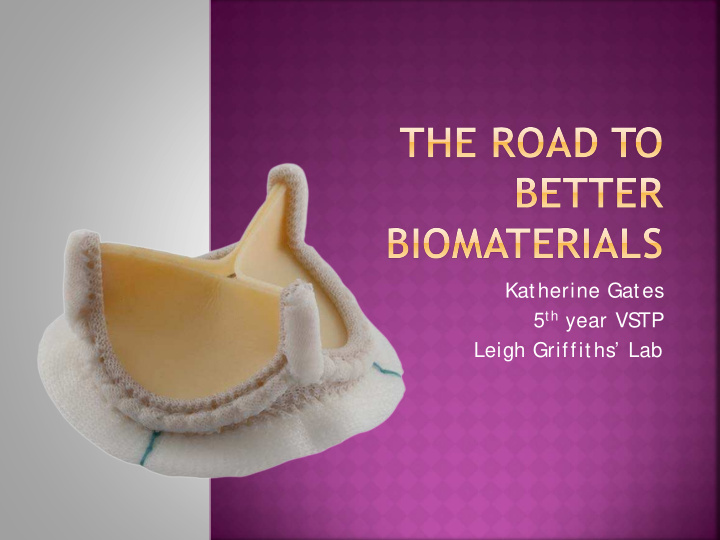



Kat herine Gat es 5 th year VS TP Leigh Griffit hs’ Lab
American Heart Associat ion (AHA) est imat es t hat 2.5% of t he populat ion afflict ed by valve disorders 20,000 deat hs annually 100,000 valve replacement s in 2015 alone
Bovine Pericardium (BP) Glutaraldehyde fixation crosslinks and “ hides” antigens 10 year lifespan ~5 years in j uvenile patients Calcification and destruction dysfunction of valve due to residual antigenicity
Anything that stimulates an immune response 33 known antigenic proteins in BP But is it all of them? Antigen identification is the first step in generating better biomaterials
Hypothesis 1: Affinity chromatography can be used to rapidly identify antigens that human patients have developed as a graft- specific humoral immune response towards glutaraldehyde-fixed BP heart valve replacements. Specific aim 1: Apply affinity chromatography shotgun proteomic antigen identification to determine which BP proteins are xenoantigenic following heart valve replacement.
election Protein Extract Affinity Patient S Chromatography LC-MS S / MS tatistical Analysis
Bovine : 39 Mechanical : 44
Hypothesis 2: Human graft-specific immune responses towards BP heart valve implants are independent of carbohydrate epitopes Specific aim 2: Apply affinity chromatography shotgun proteomic antigen identification process to deglycosylated proteins.
election Protein Extract Patient S Deglycosylation/Alpha-galactosidase Affinity Chromatography LC-MS / MS S tatistical Analysis
Extraction solution does not interfere with deglycosylation process Optimal time is 24 hours of deglycosylation at 37C for non- denatured proteins
Valve Center at Mayo Clinic Prospective collection In Vivo study Heart Transplant Patients
BIG PICTURE By knowing what makes a biomaterial antigenic Y ou can construct something that isn’t antigenic
Questions?
Recommend
More recommend